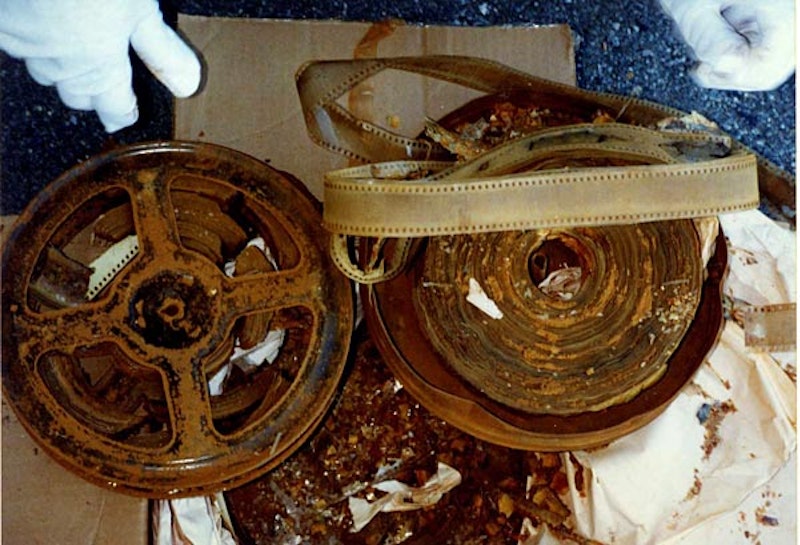Earlier this month, ten silent films thought to be lost forever were delivered in a mahogany box to the Library of Congress, a gift from the Boris Yeltsin Presidential Library. According to The Washington Post, there are as many as 194 more lost films from the 1910s and 20s that have been discovered, preserved and pristine, in Russia's vaults. Last year, 75 lost films from the same period were returned to the U.S. from New Zealand. Films that we consigned to memory have been brought back to life by the good auspices of other cultures. Why are we Americans so terrible at keeping up our own artistic legacies?
We've always been callous about many of our treasures here in this country. Important books by writers like Ray Bradbury or Harlan Ellison flit in and out of print. So many of our great musicians have historically found more willing audiences overseas, whether in Europe or East Asia—from the Beatles idolizing James Jamerson to the countless jazz musicians who practically expatriated, unable to collect 10 people in a room in the U.S. but touring endlessly across the globe. Mothers threw out comic book collections and comic book publishers trashed original art with sickening regularity. Orson Welles' second film, The Magnificent Ambersons, in many ways superior to Citizen Kane, remains unavailable on DVD in the U.S., and Welles' original ending will most likely never be restored. Americans didn't even flock to Kane until the 1960s: before then, we had to rely on French critics like Andre Bazin to recognize its genius.
Early cinema is perhaps the most ill-served of our arts. Shot mostly on highly-flammable and quickly-deteriorating nitrate stock, films from the early 20th century started degrading and disappearing almost immediately, and since there was a flurry of output of new material, no distributor ever felt the need to preserve and re-present old films. While the 20th century saw music and literature quickly become mass-produced items for individual purchase, allowing private collectors to more easily preserve at least a few copies of many works, high-quality reproductions of films didn't become widely available until the century had almost turned.
We're now two decades into the DVD revolution, and some rough number crunching based on info from imdb.com* suggests that under 12 percent of all feature films have ever made it to that format. And, since monuments to the human spirit such as How to Lose a Guy in 10 Days or the remake of I Spit On Your Grave are pro forma memorialized in digital libraries by virtue of being current big studio releases, you can bet that the percentage of films available fall disproportionately on the contemporary and commercial side of the fence.
Setting aside the films that are preserved in studio vaults, deemed commercially undeserving of restoration and distribution, there are so many films that have simply ceased to be. Whole subsets of the film industry have disappeared—most notably in the realm of African-American cinema, as chronicled by The Separate Cinema Archive through lobby cards, posters, and other artifacts of an early black-run film industry. Separate Cinema concentrates on posters from the black cinema of the early 20th century because very few of the black films from that period exist at all.
Film preservation has always been an uphill battle in America. From the initial treatment of film as a disposable, commercial medium, to the neglect by studios and other private organizations of the treasures that sit decomposing in their vaults, to the general resistance to any public funding of the arts, there have been countless obstacles. It wasn't until 1988 that Congress bestowed a mandate on its Library to archive works of film, so there’s a lot of catch-up work to do. The gift from Russia is a fantastic help—though I couldn't help but notice that Russia is only gifting digital copies to the Library of Congress, and keeping the film prints in their own archives. Understandable, really—I wouldn't trust us with them either.
---
*I used two advanced searches, one for released feature films, and one with released feature films tagged with DVD information from Amazon.com. Very rough numbers, not least because there were proportionately more short films in the earliest days of Hollywood, and these numbers account only for features, but the 11.8 percent figure I got back is disturbing.

